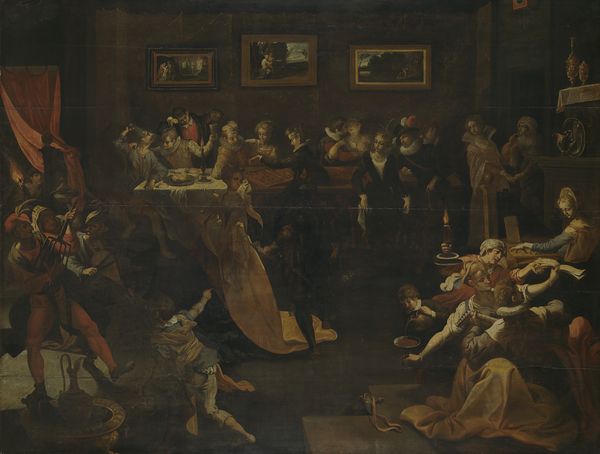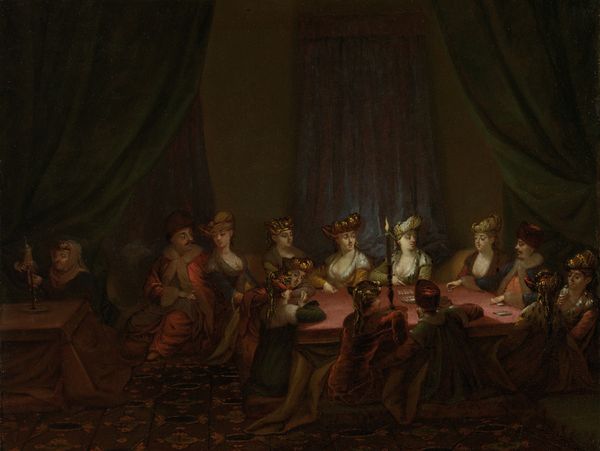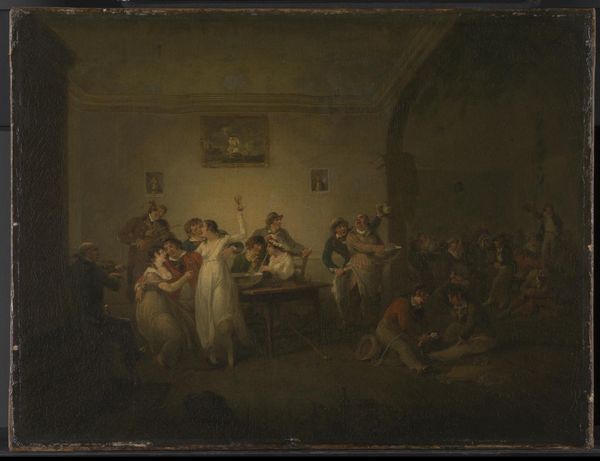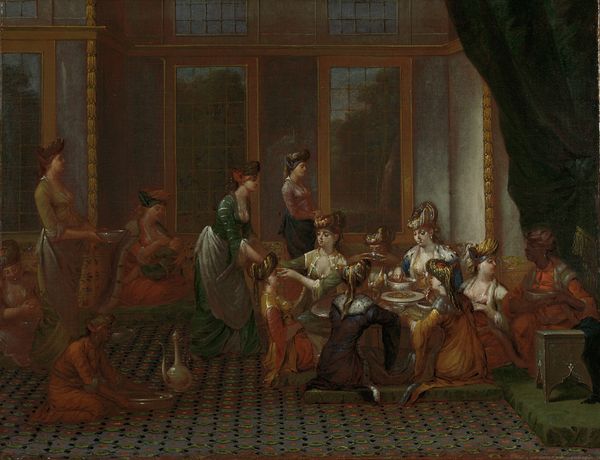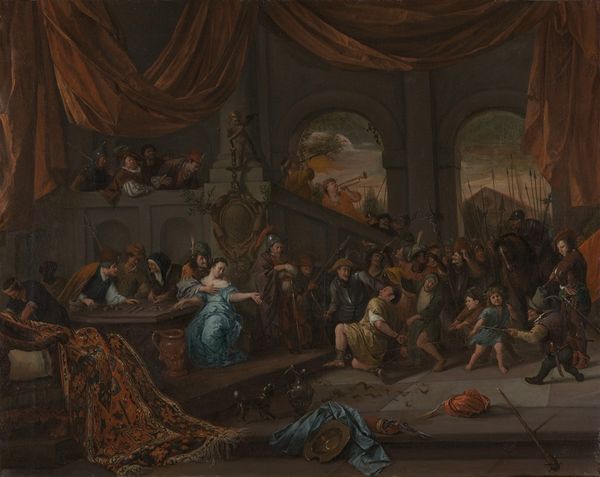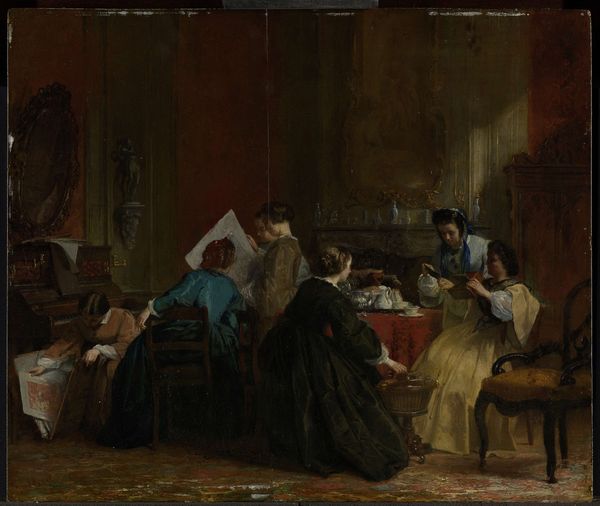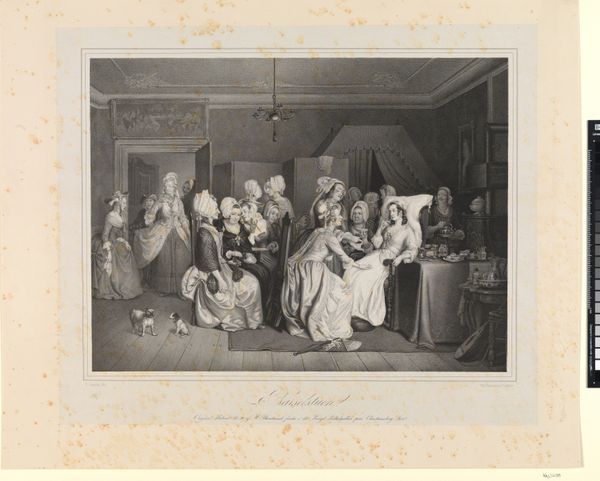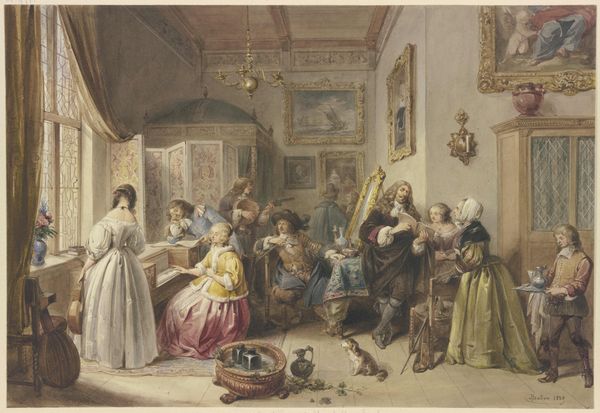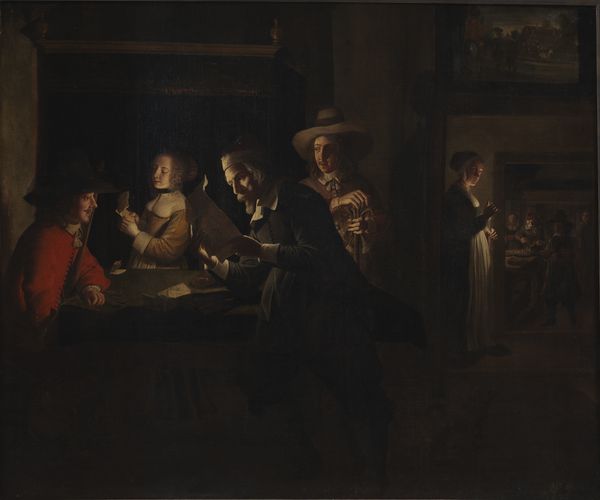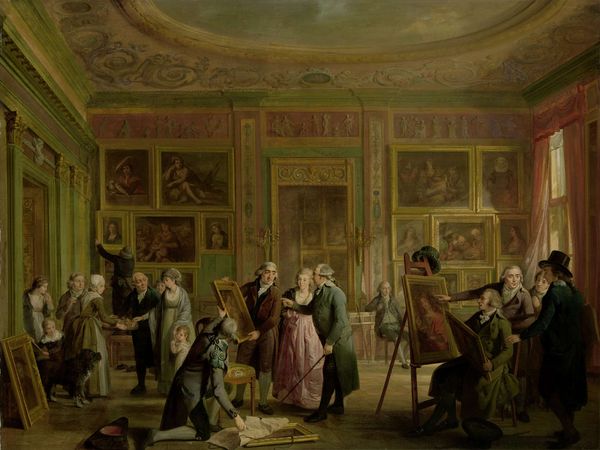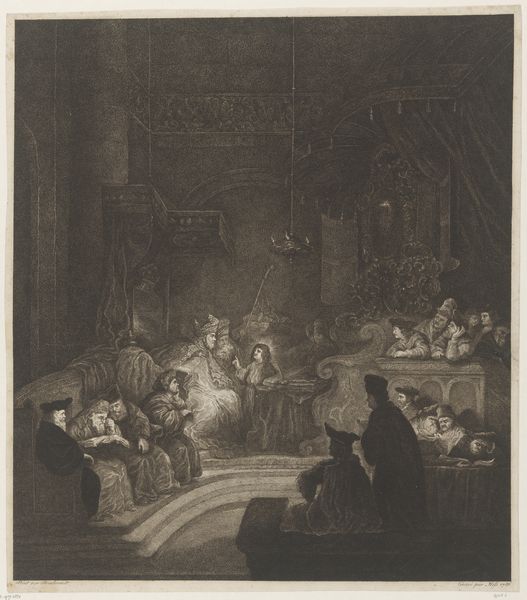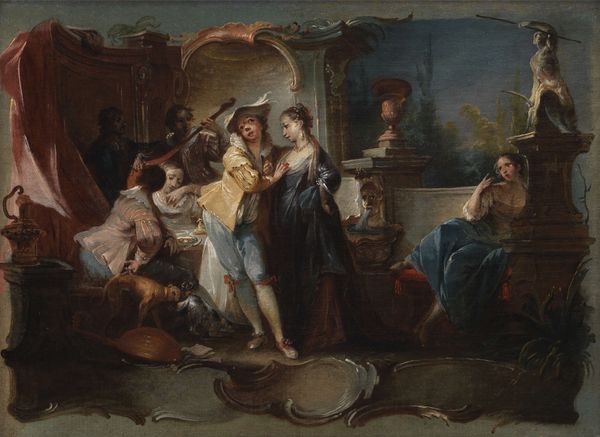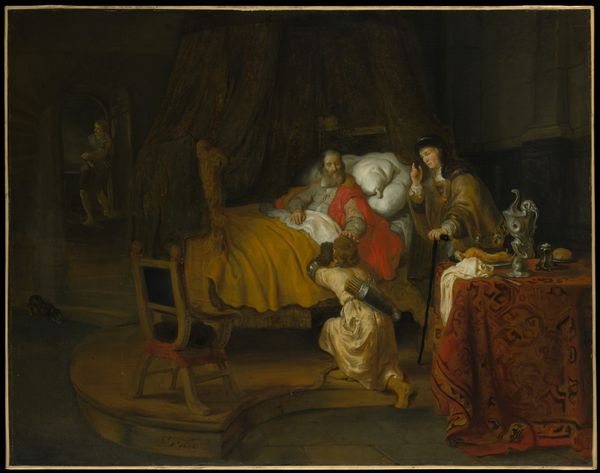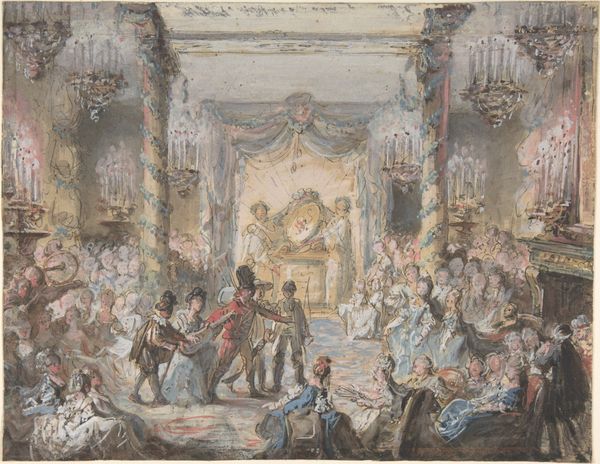
Card Players in a Drawing Room 1718 - 1781
0:00
0:00
painting, oil-paint
#
portrait
#
painting
#
oil-paint
#
group-portraits
#
genre-painting
#
mixed media
#
watercolor
#
rococo
Dimensions: 31 1/8 x 38 3/4 in. (79.1 x 98.4 cm)
Copyright: Public Domain
Curator: We are looking at Pierre Louis Dumesnil the Younger's, *Card Players in a Drawing Room,* likely painted between 1718 and 1781. It’s currently located in the Metropolitan Museum of Art. Editor: This evokes a clandestine atmosphere—a group cloaked in subdued colors, gathered in a shadowy interior, their expressions unreadable, their secrets veiled in the soft, indistinct forms. Curator: Indeed. Consider how Dumesnil utilizes the subtle interplay of light and shadow to delineate the subjects and interior. The composition hinges on the arrangement of figures around the card table, with a precise choreography evident in each gesture. The painter also meticulously constructs a depth of field which enhances the viewer’s optical progression into the recessional plane. Editor: I’m also considering the unseen labor required for this painting. Did Dumesnil prepare his own pigments, grinding and mixing? How long did he work on this piece? These aristocratic settings depended heavily on materials and manual creation—from the room decor down to the smallest details in dress, each item speaks to production processes in service of the ruling classes. Curator: Such musings, though intriguing, deviate from the art’s pure aesthetic. The essence lies not in mere manufacture, but in the orchestration of form, tone, and the masterful depiction of texture within a prescribed, harmonious pictorial space. Note, for example, how he uses these pictorial techniques in the fabric's rendering. Editor: However, doesn’t that attention to fabric serve to amplify its socio-economic meaning, too? The materials themselves, whether sourced locally or imported, and the styles represented, underscore a network of labour, capital, and power relationships during that period. It gives insight into this world that can't be found anywhere else. Curator: I maintain it is in how these elements synthesize formally that speaks to the work's profundity. Nonetheless, such varied lenses grant access to its layered essence. Editor: Agreed. There is much we can analyze through a variety of perspectives when interpreting any period.
Comments
No comments
Be the first to comment and join the conversation on the ultimate creative platform.
